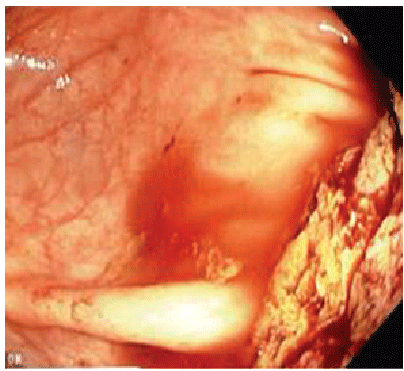
Figure 1: Colonoscopy image of cecal mass causing partial bowel obstruction


Patrick Chen* Brian Dinh, Nyla Hazratje Christopher Barde
Boonshoft School of Medicine, Wright State University, Dayton, USA*Corresponding author: Patrick Chen, Boonshoft School of Medicine, Wright State University, 725 S Ludlow St., Dayton, OH 45402, USA, Tel: (937) 208-8823; Fax: (937) 208-8828; E-mail: pchen12@midwestern.edu
Introduction: Signet ring cell carcinoma (SRCC) of the colon and rectum comprises 0.1–2.6% of colorectal cancers. Most cases are found at advance stages and rarely at early stages. SRCC are commonly found in the stomach (95%), but can also be seen in colon, rectum, ovary, peritoneum and gallbladder. We present a case of primary SRCC of the ileocecal junction.
Case: A 79-year-old male presented with abdominal pain and unintentional weight loss. Computed tomography scan of the abdomen and pelvis demonstrated a cecal mass with partial small bowel obstruction and enlarged lymph nodes adjacent to cecum without any other metastatic disease. Colonoscopy revealed a partially obstructing cecal mass due to the ileocecal valve. Right open hemicolectomy was performed. Pathology revealed malignant cells exhibiting signet ring morphology.
Discussion: Primary SRCC is associated with a poor prognosis. This is attributed to being typically diagnosed at advance stages. The factors causing the delay in diagnosis include the rarity of this tumor, intramucosal tumor spread with relative mucosal sparing, minimal symptoms, and the tumor resembling an inflammatory process on radiographic imaging. At advance stages, the median and mean survival times are 20 and 45 months respectively. In the case report; we described a rare case of primary signet ring cell carcinoma of the cecum.
Signet ring cell carcinoma; Colorectal cancer; Mucin; Metastatic adenocarcinoma
Signet ring cell carcinoma (SRCC) of the colon and rectum comprises 0.1-2.6% of colorectal cancers [1]. Most cases are found at advance stages and rarely at early stages. SRCC are commonly found in the stomach (95%), but can also be seen in colon, rectum, ovary, peritoneum and gallbladder [2]. The copious intracytoplasmic mucin pushing the nucleus to the periphery creates a signet ring cell appearance. We present a rare case of primary SRCCof the ileocecal junction.
A 79-year-old male presented with intermittent abdominal pain, decreased appetite and unintentional weight loss. Last colonoscopy 10 years prior was normal and subsequent hemoccult screening was negative. Physical examination was unremarkable. Complete blood count was remarkable for hemoglobin of 8.4 g/dl. Computed tomography scan of the abdomen and pelvis demonstrated a cecal mass with partial small bowel obstruction and enlarged lymph nodes adjacent to cecum without any other metastatic disease. Colonoscopy revealed a partially obstructing cecal mass due to the ileocecal valve and was otherwise normal (Figure 1). Right open hemicolectomy was performed without complications. Pathology of the mass revealed grade 2, moderately differentiated adenocarcinoma with abundant mucin production, malignant cells exhibiting signet ring morphology, and 8 of 17 lymph nodes with metastatic adenocarcinoma (Figures 2-6). He was scheduled for adjuvant chemotherapy pending recovery from surgery.

Figure 1: Colonoscopy image of cecal mass causing partial bowel obstruction
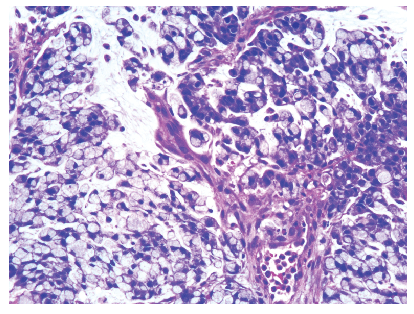
Figure 2: Histological view for biopsy of ileocecal mass showing diffuse signet ring cell invasion with hematoxylin/eosin staining.
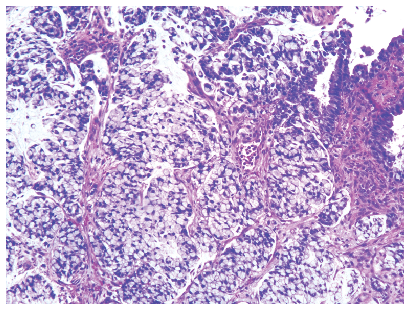
Figure 3: Biopsy of ileocecal mass showing signet ring cell carcinoma
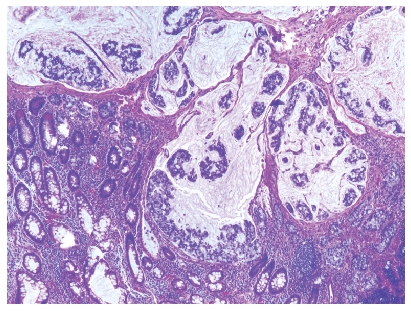
Figure 4: Biopsy of ileocecal mass showing signet ring cell carcinoma
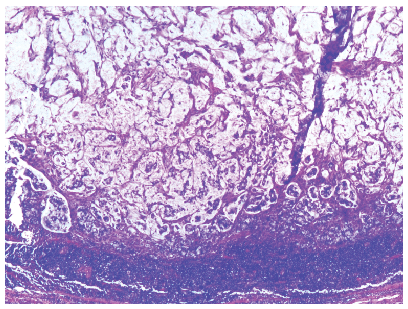
Figure 5: Lymph node biopsy with signet ring cell carcinoma
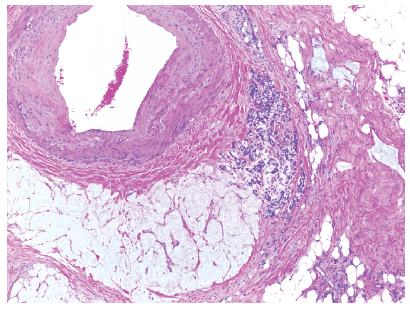
Figure 6: Biopsy showing mesenteric invasion of signet ring cells
Discussion
Primary SRCC of the colon is associated with a poor prognosis. This is largely attributed to being typically diagnosed at advance stages, as seen in our patient. The major factors causing the delay in diagnosis include the rarity of this tumor, intramucosal tumor spread with relative mucosal sparing, minimal symptoms with heme-negative stools, and the tumor resembling an inflammatory process on radiographic imaging [3]. At advance stages, the median and mean survival times are 20 and 45 months respectively [4-6]. There is no clear predominance for gender in SRCC [7- 10]. According to Thota et al. [11], SRCC of the colon has been commonly found on the right side of the colon involving the cecum and ascending colon. Makino et al. [12] on the other hand, found it mostly arising in the left side of the colon.
Clinicians have difficulty diagnosing this disease at early stages because significant symptoms are lacking. A study followed 17 patients with stage 0/I disease for five years and all 17 patients remained alive, while patients with T2 disease had 75% five-year survival [12]. When the tumor reaches stage T3 or more, the prognosis is extremely poor [12]. It remains unknown whether SRCC develops from adenomatous polyps as reported by two case reports [13,14]. The more accepted theory is SRCC arises from flat colonic mucosa, which may be another contributor to late diagnosis [15].
Moreover, an association between ulcerative colitis and SRCC of the colorectum has been studied. Ojeda et al. [16] found that 7 of 60 patients had both ulcerative colitis and primary colorectal SRCC.Anthony et al. [1] found that 4 of 29 patients had a history of inflammatory bowel disease. While these associations have been made, the relationship between the two disease processes remains undetermined. Another discussed risk factor is a history of colorectal cancer. However, studies have found that family history of colorectal cancer may not be a predictive factor for signet ring cell cancer [2].
A high incidence of metastatic peritoneal dissemination and low incidence of hepatic metastasis are regarded as characteristic features of SRCC [1,2,5,17-20]. Lymphatic invasion has been seen in 90.6% and venous invasion in 62.5% of SRCC, which was the pattern of metastasisas seen in our patient [12]. Due to the high incidence of peritoneal dissemination, intraperitoneal chemotherapy for palliative treatment should be considered. However, Psathakis et al. [9] found no benefit to this therapy.
In brief, SRCC should not be excluded based on the location of mass lesion. More studies and cases are needed to determine at risk patient populations with primary SRCC for the high mortality benefit of early detection. In the case report, we described a rare case of primary signet ring cell carcinoma of the cecum.
Download Provisional PDF Here
Article Type: Case Report
Citation: Chen P, Dinh B, Hazratjee N, Barde C (2016) Rare Case of Primary Signet Ring Cell Cancer of Cecum. J Gastric Disord Ther 2(4): doi http://dx.doi.org/10.16966/2381-8689.124
Copyright: © 2016 Chen P, et al. This is an open-access article distributed under the terms of the Creative Commons Attribution License, which permits unrestricted use, distribution, and reproduction in any medium, provided the original author and source are credited.
Publication history:
All Sci Forschen Journals are Open Access